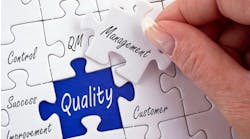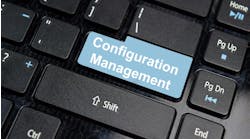Moving to a digital whiteboard, from scheduling to dispatch
By Travis Parigi, CEO of LiquidFrameworks
As more companies come to grips with digital transformation, the oil/gas and
manufacturing sectors, in particular, are clinging to antiquated systems for the sake of cost, convenience, and...sorry folks...laziness. Excel sheets, planning whiteboards, and paper calendars are still commonplace, despite the continued push to go digital.
The biggest pitfall of these systems is cost, whether it be inefficiencies or duplication of work; industry can see huge cost savings and transformative value from these topics alone. Utilizing an electronic dashboard, for example, which displays all the information needed to get the job planned, the crew dispatched, and the equipment scheduled, can lead to highly efficient and cost-effective results.
Components of managing chaos
Lack of reporting—With manual processes, managers often struggle with fully understanding and properly communicating what is actually going on. Sure, you can see a whiteboard planner with activities and people listed, but what is really happening?
Scale—As organizations grow from one office to a number of facilities, your manual processes are sure to break down. Having digital tools that help give everyone access to the same information empowers all facilities to know what is being scheduled, who is on the job, and the data that goes along with all of those locations. Building a digital dashboard allows you to scale your organization and can often eliminate the manual bottleneck.
Singular fail point—With manual systems you often have one person or facility that can cause failure for everyone else. Manual systems (like traditional whiteboards) can easily be erased, provide no digital backup, and can be forgotten once someone has left the facility. Moving to a digital system enables everyone full access and ensures that information will never be accidentally erased before everyone on your team has a chance to understand what is actually going on.
Manual process—With current manual processes for scheduling, people may have duplicate jobs, assets may not be assigned to the correct place, and certifications or skills may not be adequately tracked, thus causing double-bookings, the wrong person on the job, and loss of time and money.
The rise of the digital dashboard
Using antiquated systems can cause a number of hurdles for managers and executives. But, it doesn’t have to be that way. The use of a digital dashboard can alleviate many of the headaches that companies have around this crucial business activity.
Some benefits include:
- Avoiding duplicate scheduling—With a digital dashboard, all jobs and people are accounted for. Everyone, from managers to field workers, can quickly and easily see who is scheduled for a job, ensuring that you don’t have conflicts with your field team. Avoiding duplicate schedules not only saves you money, but it also increases efficiencies and makes sure that everyone understands their work throughout the day.
- Tracking qualifications—Oftentimes, jobs require certain people that have specific skills to complete a job. Digital solutions help managers keep track of all the certifications a job may need and who is the best person for the job. You can also manage and track which certifications are going to be renewed, enabling managers to adequately plan for expiring certifications and qualifications, ensuring that there is no time lost for a given employee or team.
- Customizable views—Platforms that include dynamic drag-and-drop functionality allow users the chance to create a personalized view for each kind of project management preference. This helps personnel see what they need to see and in a way that is easy for them to understand and visualize.
- Personnel notifications—According to a study by Asurion, Americans check their phones every 12 minutes. Your workers are connected digitally in their personal lives and expect the same experience on the job. With a digital system, your team can receive notifications and updates on their phones. They can also see when a project scope has changed when more resources are needed, and then plan for the day, week or month.
- Customer engagement—Your customers trust you and your company to ensure that their projects will be completed on time and with as little disruption as possible. Digital-scheduling solutions enable you to start the project on the best foot possible, making your customers feel like you are the expert and give them confidence that you are the right team for the job. Everything from scheduling to completion of a job requires insight and planning, starting the project right will enable everyone associated with the project with the proper insights and gain you valuable points from your customer.
Eliminating antiquated means of scheduling and moving to an automated system is sure to alleviate chaos and drive the highest level of customer satisfaction. Based on a study from Harris Polls, an average of 55 percent of work time is spent on administrative tasks and other interruptions.
Utilizing an electronic dashboard cuts down on the confusion and inconsistencies that come with tedious manual processes, shifting the focus to customer needs. Tracking qualifications of personnel, access to schedules, customizable views and notifications all lead to more efficient and effective use of time and resources.


